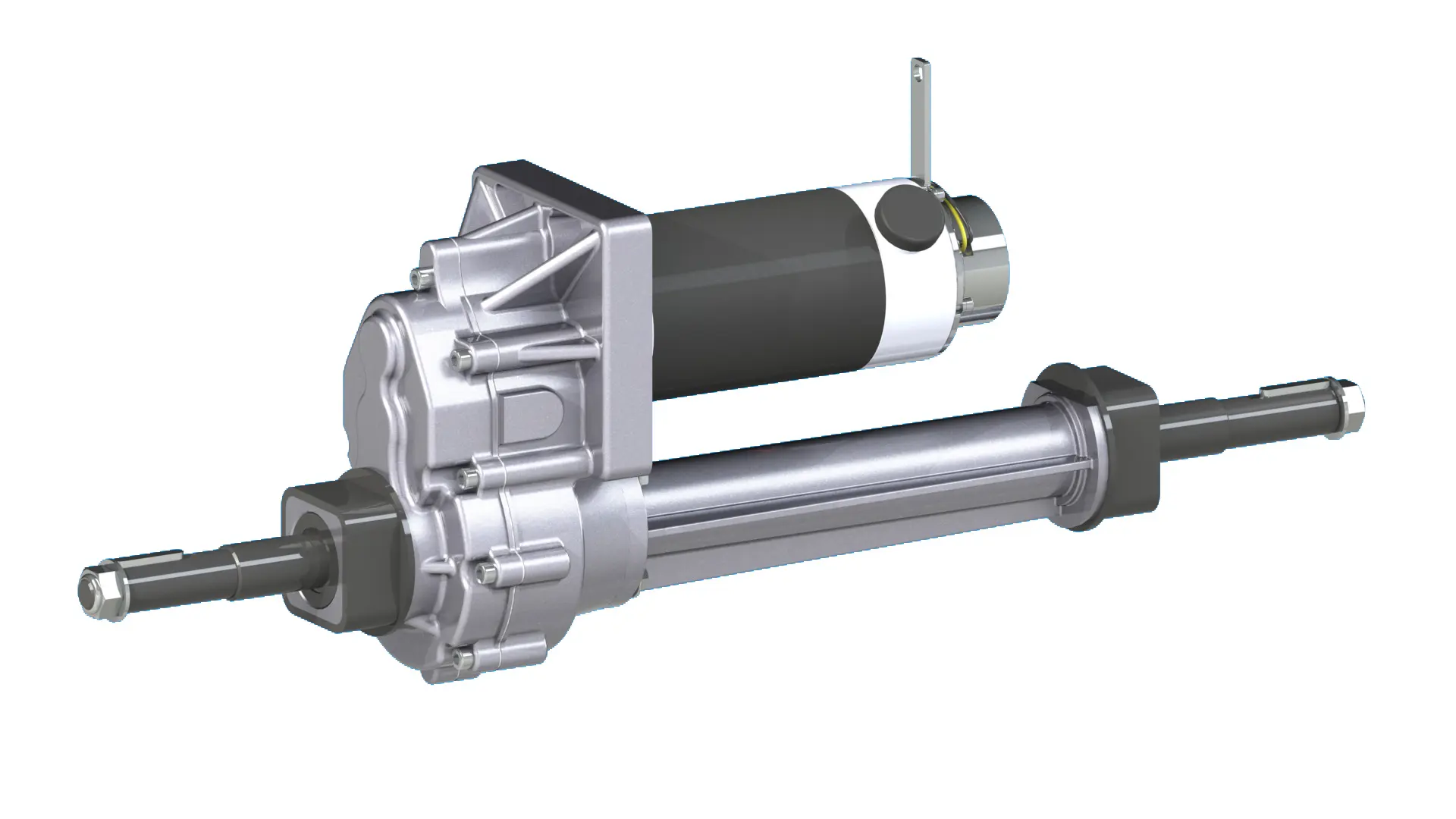When it comes to off-road vehicles, the choice of drivetrain components can significantly impact performance, especially in challenging terrains. A transaxle, which integrates the transmission, differential, and axle into a single unit, offers several advantages that make it particularly beneficial for certain off-road conditions。
1. Rocky and Uneven Terrain
Rocky trails with uneven surfaces require a vehicle to have excellent traction and stability. Transaxles can provide improved weight distribution, which is crucial for maintaining balance and control on such terrains。For example, the Polaris RZR Pro XP Ultimate utilizes a high-torque, compact transaxle design, achieving superior acceleration and hill-climbing capability while maintaining a low center of gravity for improved stability on challenging off-road terrain。This makes it easier for the vehicle to navigate over large rocks and maintain traction without losing control.
2. Sandy Dunes
Sandy dunes are notorious for their loose and shifting surfaces, which can easily cause a vehicle to lose traction and get stuck. Transaxles can enhance traction by providing a more direct power delivery to the wheels。In vehicles like the Yamaha Wolverine RMAX2 1000, the transaxle facilitates seamless switching between two-wheel and four-wheel drive modes, providing optimal traction and control in various off-road conditions while maintaining a compact and lightweight design。This adaptability is essential for maintaining forward momentum in the soft and shifting sands of dunes.
3. Muddy and Slippery Paths
Muddy and slippery paths require a vehicle to have not only good traction but also the ability to handle uneven and unpredictable surfaces. Transaxles can improve handling and stability in these conditions by allowing for better weight distribution and reduced complexity in the drivetrain。The compact design of a transaxle also allows for a larger suspension stroke, which can be beneficial in absorbing the impacts of rough terrain。This helps the vehicle maintain better contact with the ground, reducing the risk of slipping or losing control in muddy conditions.
4. Steep Inclines and Declines
Steep inclines and declines are common in off-road adventures and pose significant challenges to vehicle stability and traction. Transaxles can provide a more even power distribution and improved weight balance, which are critical for climbing steep slopes and descending safely。For example, in high-performance off-road vehicles like UTVs and ATVs, the transaxle design allows for a tighter turning radius and excellent tractive effort, enabling superior mobility and productivity in confined job sites while minimizing ground disturbance。This makes it easier for the vehicle to maintain control and avoid rolling over on steep inclines and declines.
5. Forest Trails and Woodlands
Forest trails often feature a mix of rocky, muddy, and uneven surfaces, combined with the need to navigate around trees and other obstacles. Transaxles can enhance the vehicle’s ability to handle these varied conditions by providing a more compact and efficient drivetrain。The reduced number of moving parts in a transaxle can lead to fewer points of failure, which is crucial in remote and rugged environments where repairs may not be easily accessible。This reliability ensures that the vehicle can continue to perform well even in the challenging and unpredictable conditions of forest trails.
6. Snowy and Icy Conditions
In snowy and icy conditions, traction is a major concern. Transaxles can improve traction by providing a more direct and efficient power delivery to the wheels。Vehicles equipped with transaxles can also benefit from better weight distribution, which helps in maintaining stability and control on slippery surfaces。For example, Subaru’s Symmetrical All-Wheel Drive system, enabled by a transaxle design, provides superior traction and handling on various road surfaces, enhancing the driving experience and safety。This makes transaxle-equipped vehicles well-suited for driving in snowy and icy conditions, where maintaining grip is essential for safety and performance.
7. Desert Environments
Desert off-roading often involves a combination of sandy dunes, rocky outcrops, and uneven terrain. Transaxles can provide the necessary power and control to navigate these diverse conditions。The compact and lightweight design of a transaxle allows for better handling and maneuverability, which is crucial in the fast-paced and unpredictable environment of desert racing。For example, the Bobcat T76 Compact Track Loader uses a transaxle design that allows for a tight turning radius and excellent tractive effort, enabling superior mobility and productivity in confined job sites while minimizing ground disturbance。This adaptability makes transaxles particularly beneficial for vehicles used in desert off-roading.
Conclusion
Transaxles offer several advantages that make them particularly beneficial for off-road vehicles navigating challenging terrains. Whether it’s the improved weight distribution and traction on rocky trails, the enhanced stability on steep inclines, or the better handling in snowy and icy conditions, transaxles can significantly enhance the performance and reliability of off-road vehicles。By integrating multiple components into a single unit, transaxles not only reduce the complexity and weight of the drivetrain but also provide a more efficient and direct power delivery to the wheels。This makes them an ideal choice for a wide range of off-road applications, from recreational off-roading to professional use in rugged environments.
Post time: Feb-14-2025


